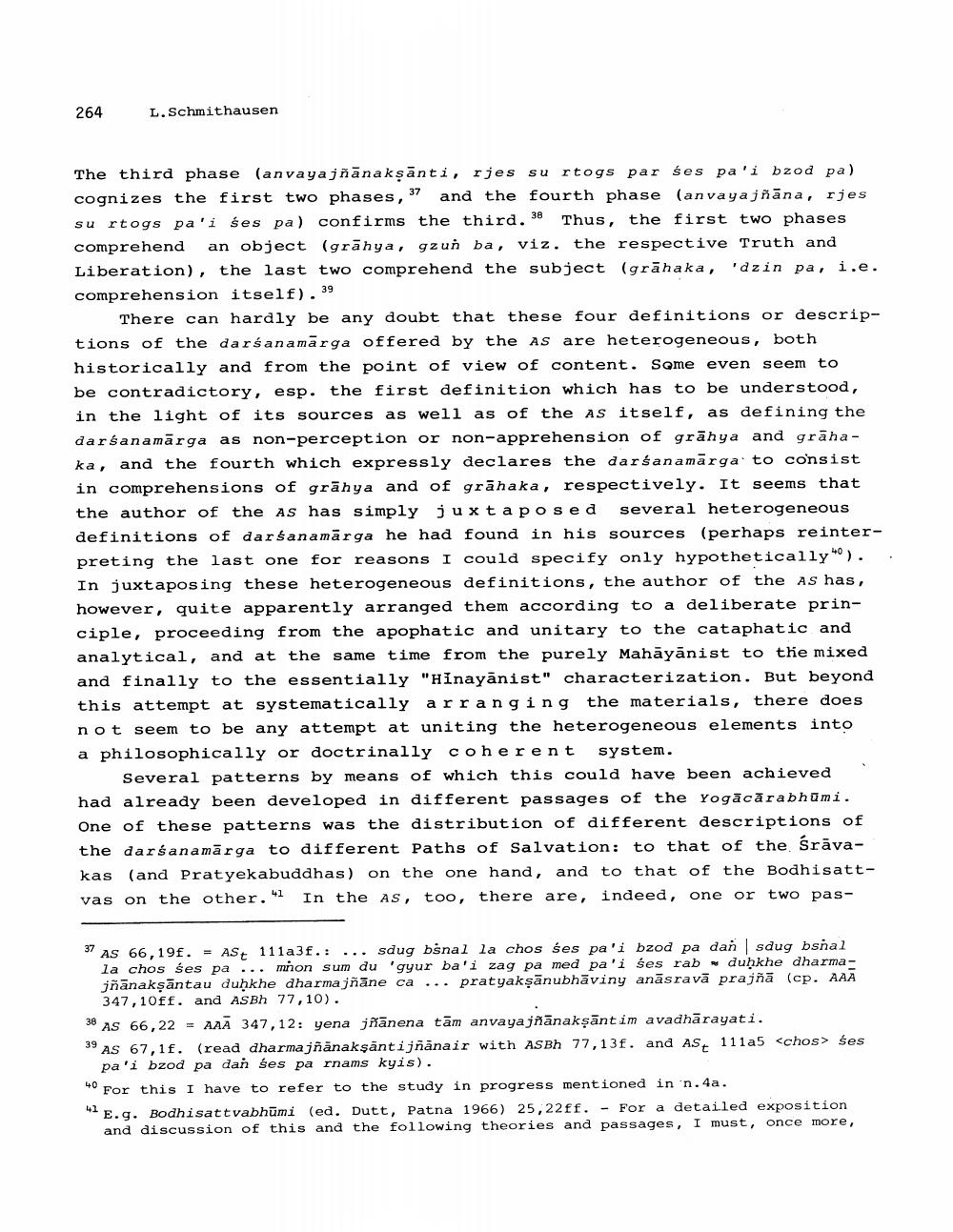________________
264
L. Schmithausen
The third phase (anvayajñānakşānti, rjes su rtogs par ses pa'i bzod pa) cognizes the first two phases, and the fourth phase (anvayajñāna, rjes su rtogs pa'i śes pa) confirms the third. 38 Thus, the first two phases comprehend an object (grāhya, gzun ba, viz. the respective Truth and Liberation), the last two comprehend the subject (grāhaka, 'dzin pa, i.e. comprehension itself). 39
There can hardly be any doubt that these four definitions or descriptions of the darśanamārga offered by the As are heterogeneous, both historically and from the point of view of content. Same even seem to be contradictory, esp. the first definition which has to be understood, in the light of its sources as well as of the As itself, as defining the darśanamārga as non-perception or non-apprehension of grāhya and grāhaka, and the fourth which expressly declares the darśanamārga to consist in comprehensions of grāhya and of grāhaka, respectively. It seems that the author of the AS has simply juxtaposed several heterogeneous definitions of darśanamārga he had found in his sources (perhaps reinterpreting the last one for reasons I could specify only hypothetically). . In juxtaposing these heterogeneous definitions, the author of the As has, however, quite apparently arranged them according to a deliberate principle, proceeding from the apophatic and unitary to the cataphatic and analytical, and at the same time from the purely Mahāyānist to the mixed and finally to the essentially "Hinayānist" characterization. But beyond this attempt at systematically arranging the materials, there does not seem to be any attempt at uniting the heterogeneous elements into a philosophically or doctrinally coherent system.
Several patterns by means of which this could have been achieved had already been developed in different passages of the Yogācārabhūmi. One of these patterns was the distribution of different descriptions of the darśanamārga to different Paths of Salvation: to that of the śrāvakas (and Pratyekabuddhas) on the one hand, and to that of the Bodhisattvas on the other. 41 In the As, too, there are, indeed, one or two pas
37 AS 66,19. = ASt 111a3f.: ... sdug bsnal la chos ses pa'i bzod pa dan sdug bsnal
la chos ses pa ... mon sum du 'gyur ba'i zag pa med pa'i śes rab duḥkhe dharmajñānakşāntau duḥkhe dharmajñāne ca ... pratyakşānubhāviny anāsravā prajñā (cp. AAA
347,10ff. and ASBh 77,10). 38 AS 66,22 – AAA 347,12: yena jñānena tām anvaya jnanaksāntim avadhārayati. 39 AS 67,1f. (read dharmajñanakşantijñanair with ASBH 77,13f. and AS111a5 <chos > śes
pa'i bzod pa dan ses pa rnams kyis). * For this I have to refer to the study in progress mentioned in n.4a. 41 E.g. Bodhisattvabhūmi (ed. Dutt, Patna 1966) 25,22ff. - For a detailed exposition
and discussion of this and the following theories and passages, I must, once more,




